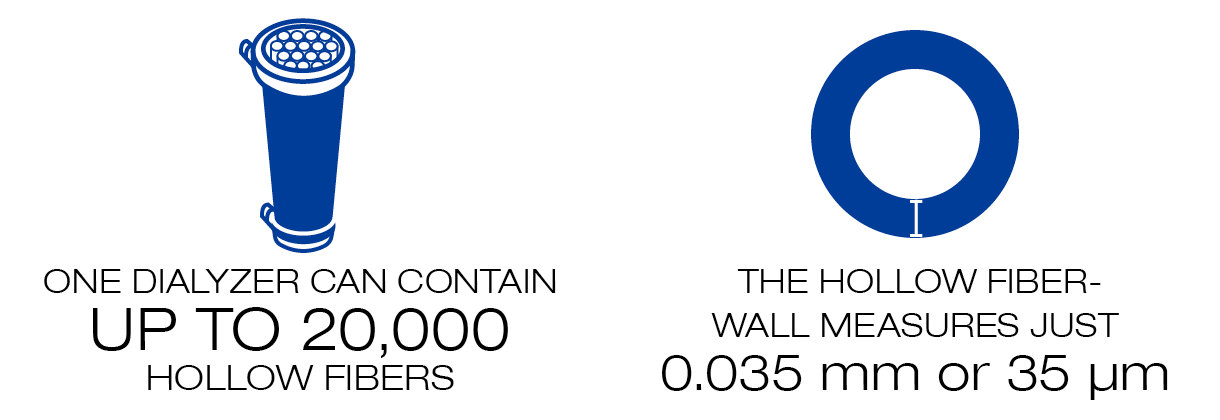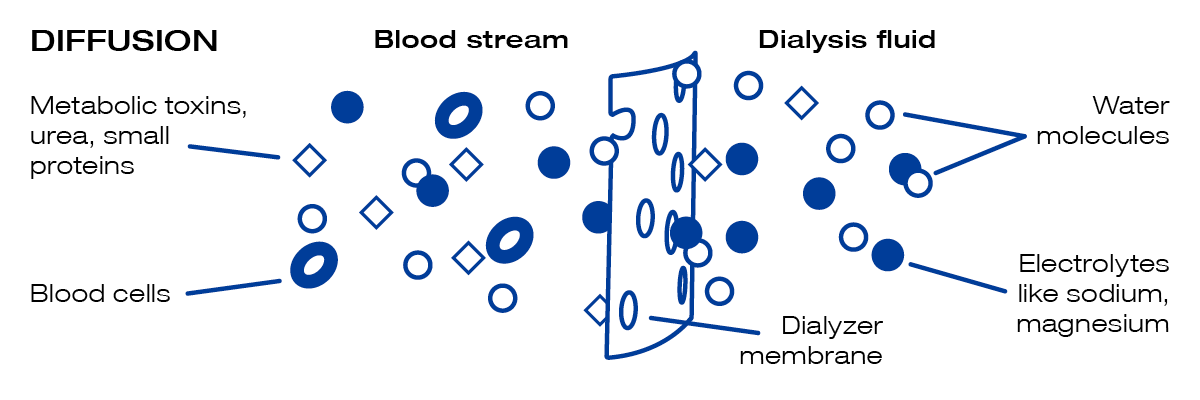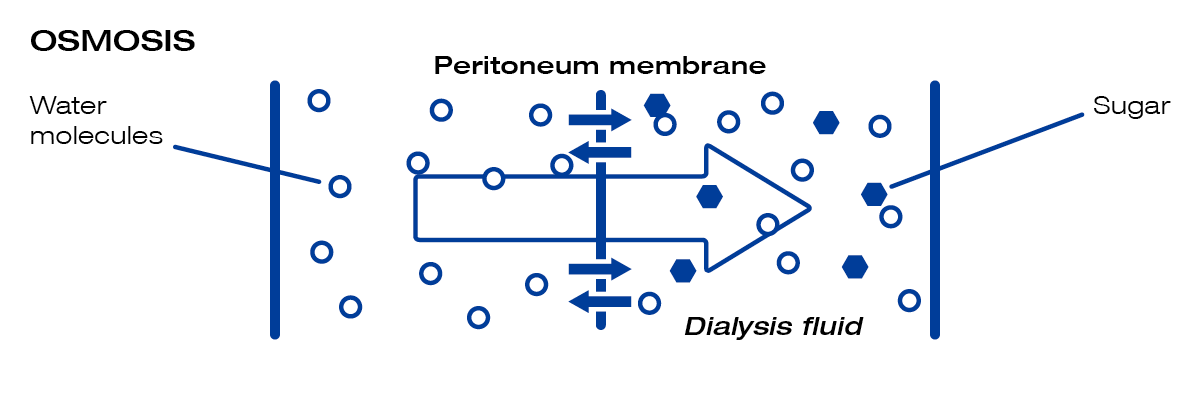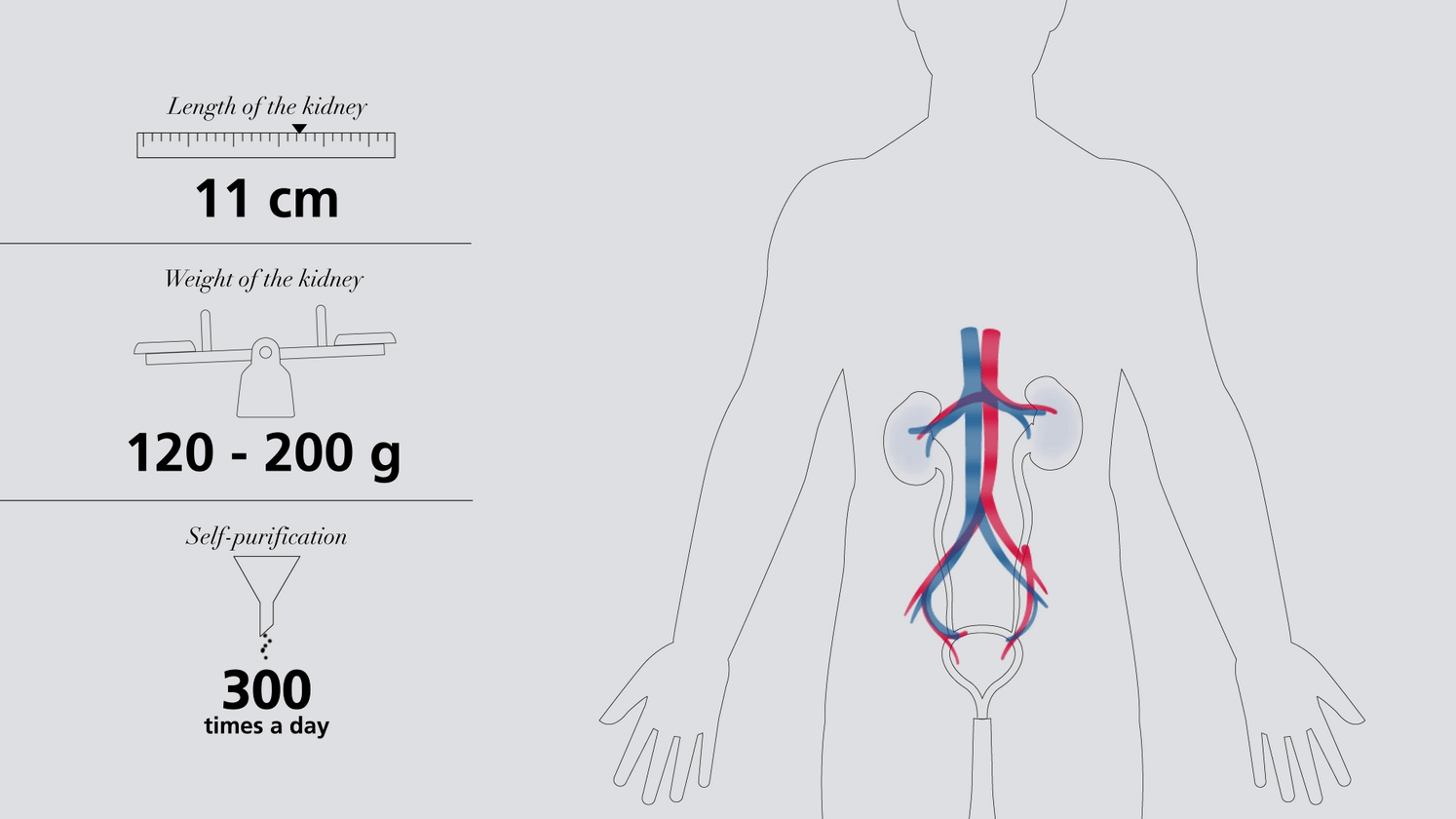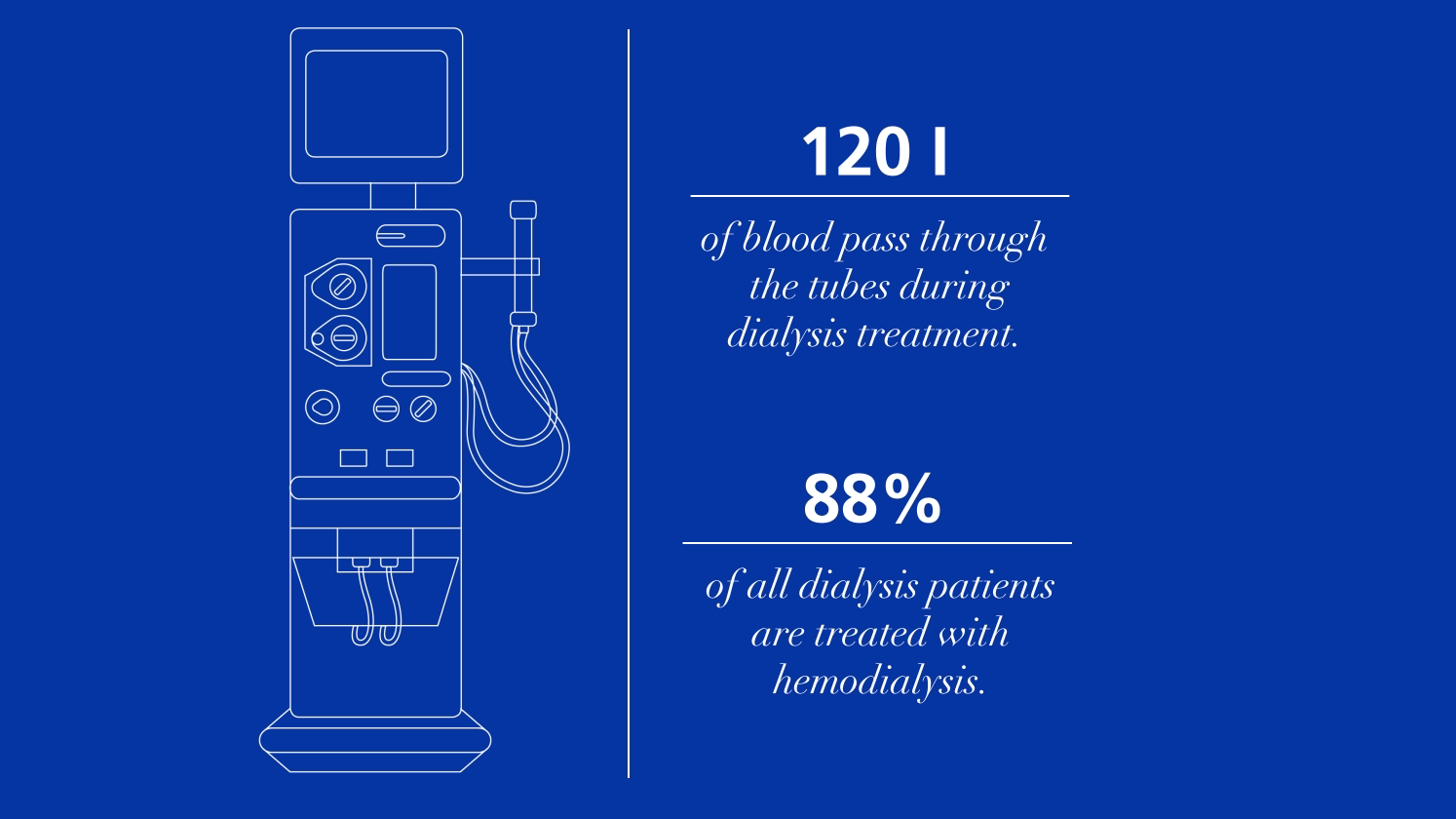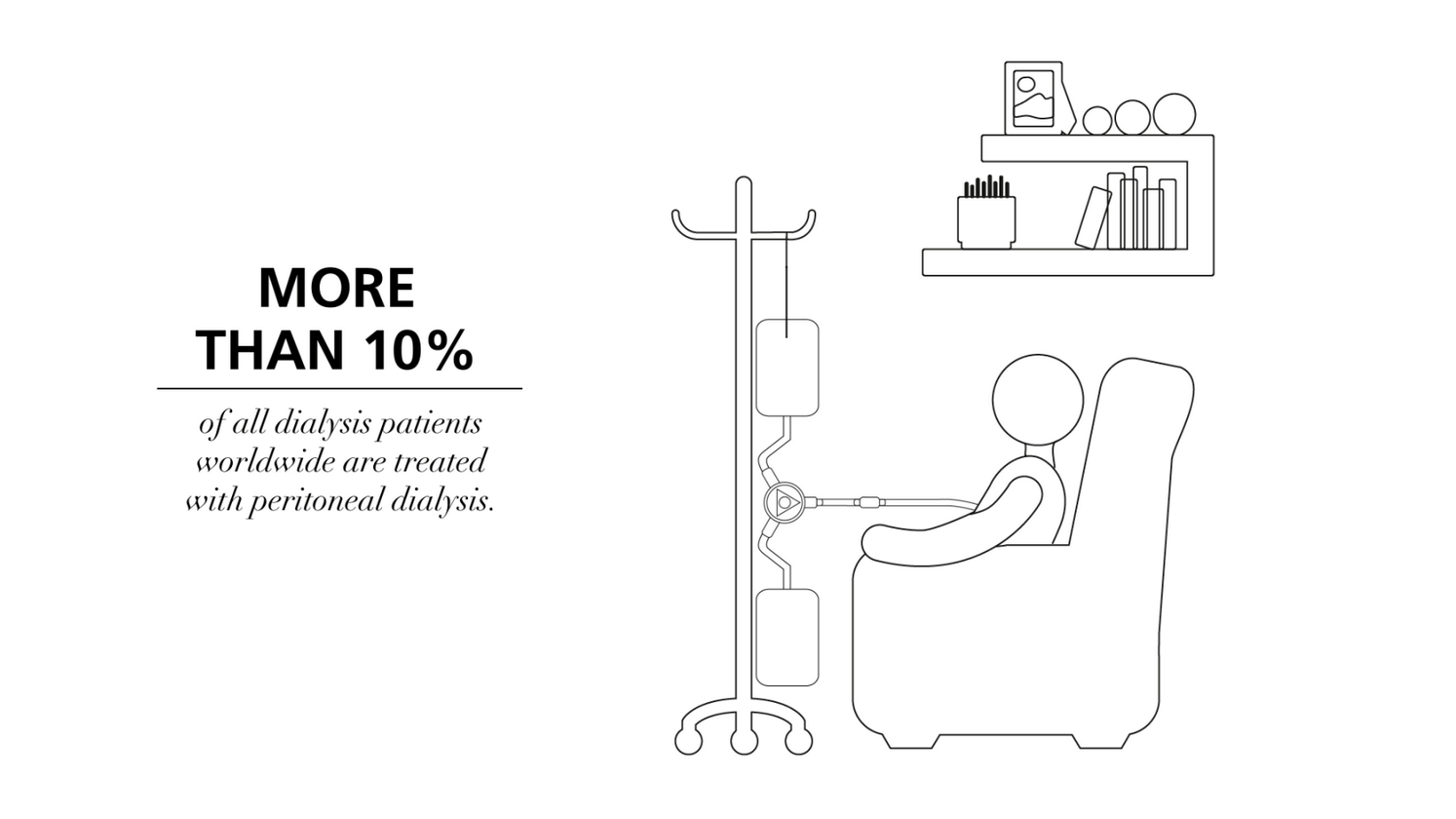What is dialysis and how does dialysis work?

What is dialysis?
Dialysis largely replicates the functions of the kidneys in patients with chronic kidney failure. Hemodialysis and peritoneal dialysis take over the key tasks of the kidneys, removing waste materials, toxins, excess salt and fluids from the body.
Dialysis treatment does not entirely replace all the functions of the kidneys, meaning that patients almost always need to take certain medications regularly. These include antihypertensive treatments, drugs for lowering phosphate levels in the blood, vitamins and drugs that boost the production of red blood cells to prevent anemia.
How does kidney dialysis work?
Dialyzers in hemodialysis
A dialyzer is an artificial filter containing fine fibers. The fibers are hollow with microscopic pores in the wall, also known as semi-permeable dialysis membrane. To remove toxins during hemodialysis, a special dialysis-fluid flows through the filter, and bathes the fibers from the outside, while the blood flows through the hollow fiber. Due to the semi-permeable dialysis membrane, toxins, urea and other small particles can pass through the membrane.
How dialysis removes wastes and toxins from the body
The transfer of metabolic toxins through the membrane into the dialysis fluid is based on natural processes. This process is known as diffusion. When blood and dialysis fluid with different concentrations of molecules are separated by a semi-permeable membrane, the molecules move through the membrane to the lower concentration. However, large proteins and blood cells are too big to pass though the small membrane-pores, so they remain in the blood.
In hemodialysis an artificial membrane (a dialyzer) is used. In contrast, in peritoneal dialysis (the peritoneum which lines the abdomen walls) is used as a natural semi-permeable dialysis membrane.
How excess water is removed from the body in dialysis
Patients with chronic kidney failure usually have problems with excess fluid, because they have problems passing urine.
To remove excess water from the body during peritoneal dialysis, sugar is added to dialysis fluid. As sugar molecules cannot easily pass through the peritoneum membrane, body water passes through the peritoneum into the dialysis fluid, to balance out the difference in fluid concentration. This process is known as osmosis. By continuously introducing fresh dialysis fluid, excess water that the kidneys cannot remove (and would otherwise collect in the body) can be removed from the blood.
Under hemodialysis, if the pressure outside the hollow fiber is lower than inside, body water is removed from the blood that flows through the hollow fiber. This process is called ultrafiltration and removes excess water from the body.
Convection as an effective way to do hemodialysis
Another process that can be used in hemodialysis is convection. Convection plays an important part in hemodiafiltration, a particularly effective type of hemodialysis. In convection, water is pushed through the membrane using hydrostatic pressure. Along with the water, this pressure drags toxins and waste molecules through the semi-permeable membrane.
Read more about Treatment options.

